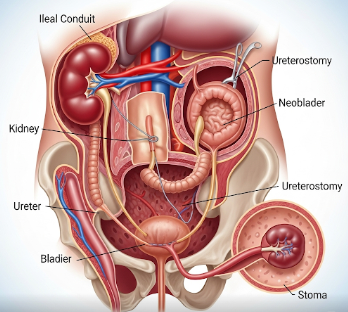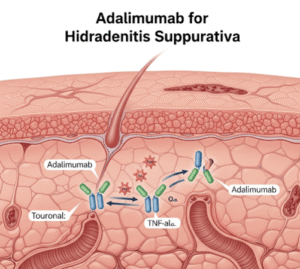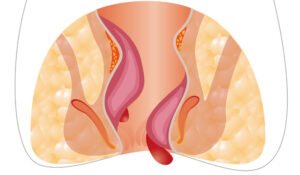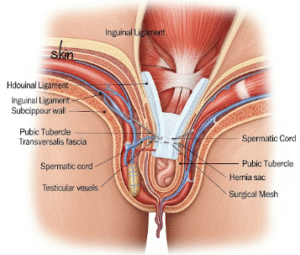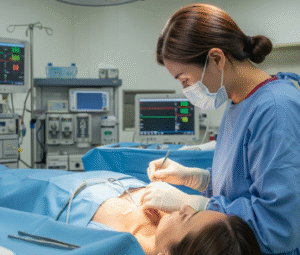Overview
Urinary reconstruction and diversion are advanced surgical solutions for patients whose bladder has been removed or is no longer functional due to cancer, trauma, or congenital abnormalities. These procedures allow urine to leave the body safely, either through a stoma or via a newly created bladder substitute.
In South Korea, world-class hospitals offer cutting-edge reconstructive techniques such as ileal conduit, continent urinary diversion, and orthotopic neobladder, using minimally invasive and robotic-assisted surgery. Patients benefit from shorter recovery times, precise outcomes, and strong rehabilitation programs tailored for both locals and international visitors.
What is Urinary Reconstruction & Diversion?
Urinary reconstruction and diversion refer to surgical methods that reroute urine flow when the natural bladder cannot function. Surgeons typically use sections of the intestine to build new channels or reservoirs.
Main surgical types include:
- ➤ Ileal Conduit: Uses a small piece of intestine to create a passage for urine that drains into a stoma bag.
- ➤ Continent Cutaneous Diversion: Creates an internal pouch with a catheterizable stoma, allowing patients to empty urine when needed.
- ➤ Orthotopic Neobladder: Builds a new bladder from intestinal tissue and connects it to the urethra, enabling natural urination.
What are the Benefits?
✔ Restores urinary function after bladder removal
✔ Improves long-term quality of life for patients with bladder cancer or injury
✔ Several diversion options available to match patient needs
✔ Minimally invasive robotic surgery widely practiced in Korea
✔ Excellent long-term outcomes with close medical follow-up
✔ Specialized Korean programs for patient education, stoma care, and rehab
Procedure Details:
1) How should I prepare for Urinary Reconstruction & Diversion?
- ● Comprehensive evaluation with imaging scans, blood tests, and kidney function assessment
- ● Pre-surgery counseling to discuss different diversion options and lifestyle impacts
- ● Nutrition and bowel preparation since intestinal tissue is required
- ● Medication review — some drugs, especially blood thinners, must be paused
- ● Korean hospital preparation: International patients receive multilingual support and pre-surgery education for smoother adjustment
2) What happens during the procedure Urinary Reconstruction & Diversion?
- ➤ General anesthesia is administered so patients are fully asleep
- ➤ Surgical approach can be open or robotic-assisted (Korea prefers robotic precision)
- ➤ Diversion method:
- Ileal conduit → urine flows into a stoma bag
- Continent diversion → urine stored in internal pouch, drained by catheter
- Neobladder → new bladder connected to urethra for normal urination
- ➤ Operation time usually ranges 4–6 hours depending on complexity
- ➤ Korean expertise: High use of da Vinci robotic systems ensures reduced blood loss, fewer complications, and smaller scars
3) What happens after a Urinary Reconstruction & Diversion?
- ● Recovery monitoring in intensive care for the first 24 hours
- ● Hospital stay: 5–7 days for ileal conduit, up to 10 days for neobladder patients
- ● Temporary urinary catheters placed to help healing
- ● Diet & mobility: Start with clear liquids → soft food → gradual return to normal meals, with early walking encouraged
- ● Specialist nurse training on stoma care or catheterization techniques
- ● Follow-up appointments in Korean hospitals include kidney monitoring and urinary function assessment
Risks / Benefits
✔ Key Benefits:
- ✦ Restores urination after bladder removal
- ✦ Patients regain independence and can resume work, travel, and exercise
- ✦ Robotic surgery lowers infection and recovery times
- ✦ Korean hospitals provide strong aftercare and education
⚠ Possible Risks:
- ➔ Infection or leakage at the surgical site
- ➔ Stoma irritation or blockage
- ➔ Neobladder patients may face temporary incontinence
- ➔ Long-term kidney function must be carefully monitored
- ➔ Rarely, bowel complications due to use of intestinal tissue
Recovery and Outlook
- ➤ Recovery period is usually 4–6 weeks before returning to normal activity
- ➤ Ileal conduit patients adapt quickly with stoma care training
- ➤ Neobladder patients may need pelvic floor training to regain full control
- ➤ Outlook is excellent in Korean hospitals, with high survival rates and strong patient satisfaction
- ➤ Long-term follow-up ensures kidneys and urinary tract remain healthy
When To Call the Doctor
Patients should contact their doctor if they notice:
- ⚠ Fever, chills, or infection symptoms
- ⚠ Severe abdominal pain or swelling
- ⚠ Unusual urine leakage from wounds or stoma
- ⚠ No urine output or difficulty draining pouch
- ⚠ Severe nausea or vomiting
Prompt medical attention prevents complications and ensures a smoother recovery.
Best Korea Option / Process
South Korea is recognized worldwide for excellence in urinary reconstruction and diversion surgeries.
Highlights of Korea’s approach:
- 🌟 Robotic-assisted techniques (da Vinci system widely available)
- 🌟 Highly skilled urologists with global experience
- 🌟 Multilingual medical staff to guide international patients
- 🌟 Strong rehabilitation programs for stoma management and neobladder training
- 🌟 State-of-the-art hospital care with low infection rates
- 🌟 Affordable treatment packages compared to the US and Europe
Leading hospitals in Korea:
- ✅ Seoul National University Hospital
- ✅ Asan Medical Center
- ✅ Samsung Medical Center
- ✅ Severance Hospital (Yonsei University)
These institutions provide comprehensive care, transparent pricing, and advanced facilities for patients undergoing urinary reconstruction.
✅ Quick Highlights Recap
- ➤ Three main types: Ileal conduit, continent diversion, neobladder
- ➤ Robotic surgery in Korea ensures precision & faster recovery
- ➤ Hospital stay: 5–10 days depending on procedure type
- ➤ Patients trained in stoma or catheter care for independence
- ➤ Recovery time: 4–6 weeks for normal activities
- ➤ Long-term outlook is excellent with Korean follow-up programs

